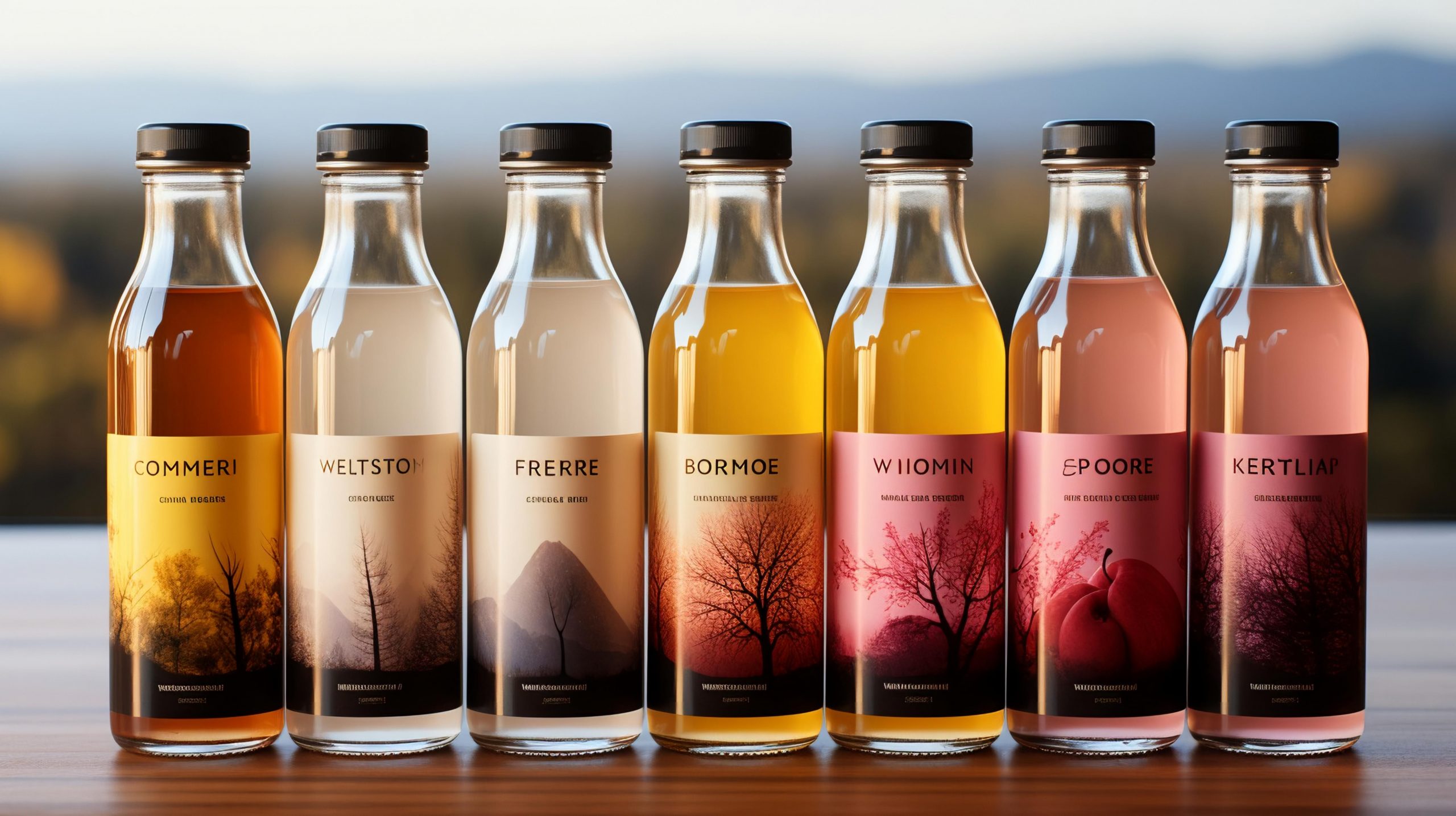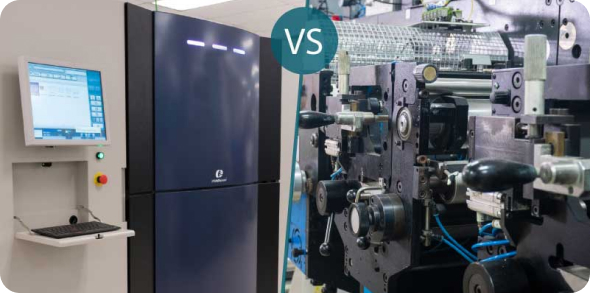In the highly competitive beverage market, every detail counts—especially your product packaging. While eye-catching design and smart branding often steal the spotlight, a successful beverage label also depends on the material it’s printed on. Choosing the right bottle label materials plays a vital role not only in how your product looks, but also in how it performs under real-world conditions like moisture, temperature shifts, and handling.
Whether you’re launching a new beverage line or refreshing your packaging, understanding different bottle label materials will help ensure your labels stay intact, look sharp, and reflect your brand quality. In this blog, we’ll walk you through how to select the best label material for your specific beverage product, with insights into use cases, pros and cons, and real-life performance.
Why Bottle Label Materials Matters More Than You Think
Before diving into the types of materials, it’s important to understand why the bottle label material choice is critical for beverage manufacturers. Unlike dry goods, beverage products are exposed to a variety of environmental stressors: refrigeration, condensation, friction during transport, and even submersion in ice buckets.
The wrong material can peel, smudge, or degrade ruining both your product’s appearance and your brand’s credibility. On the flip side, the right label material ensures your bottles remain sharp-looking from shelf to consumption.
Key Factors to Consider When Choosing Bottle Label Materials
1. Product Storage and Handling Conditions
Will your bottles be stored in refrigerators, shipped over long distances, or immersed in ice? If so, you need materials that resist moisture and temperature fluctuations. For example, polypropylene (BOPP) and vinyl are popular for water and juice bottles because of their moisture resistance.
2. Bottle Surface Type
Is your bottle glass, plastic, or metal? Smooth or textured? Certain materials like PET or BOPP adhere better to smooth surfaces, while textured bottles may require more flexible materials or stronger adhesives.
3. Shape and Size of the Bottle
Uniquely shaped bottles require label materials that can stretch or conform, such as shrink sleeves or flexible films. These options offer full-surface coverage and better adaptability.
4. Desired Visual Effect and Brand Identity
Your material choice can affect the final aesthetic of the label. For example, paper offers a natural, artisanal feel, while clear polypropylene creates a modern “no-label” look. Your bottle label materials should match your brand’s message and audience expectations.
5. Budget and Print Volume
High-performance materials like vinyl and PET can be more expensive but offer superior durability. If you’re working on a limited budget, laminated paper might offer a balance between appearance and performance.
Common Bottle Label Materials for Beverage Products
Understanding the pros and cons of each material will help you make the best decision for your brand. Here’s a breakdown of the most widely used bottle label materials in the beverage industry:
1. Paper Labels
Paper labels are best for wine, craft beverages, and small-batch products.
Pros:
- Affordable and easy to print
- Wide variety of textures and finishes (e.g., matte, gloss, felt)
- Easily customized with embossing or foil stamping
Cons:
- Low resistance to water, oils, and chemicals
- Can wrinkle or degrade in refrigerated or wet environments
Pro Tip: Use a laminated coating to improve durability for beverages stored in cooler conditions.
2. BOPP (Biaxially Oriented Polypropylene)
Best for: Water, juice, soft drinks, cold brew, energy drinks
Pros:
- Water- and moisture-resistant
- High clarity and durability
- Available in white, clear, or metallic finishes
Cons:
- Not heat-resistant
- Less premium appearance compared to paper in high-end segments
3. Vinyl Labels
Best for: Outdoor drinks, sports beverages, rugged environments
Pros:
- Exceptionally durable
- Chemical-, UV-, and moisture-resistant
- Great for long-term storage and exposure
Cons:
- More expensive than paper or BOPP
- Slightly lower print resolution than polyester or paper
4. PET (Polyester Film)
Best for: Wines, juices, flavored water, sparkling beverages
Pros:
- Excellent for high-moisture or high-temperature environments
- Tear-resistant and long-lasting
- High-quality print clarity
Cons:
- Less flexible than BOPP
- Slightly higher cost
5. Shrink Sleeve Labels
Best for: Bottles with unique shapes, 360-degree branding
Pros:
- Full-bottle coverage, conforms to any shape
- Tamper-evident and durable
- Highly customizable with vibrant graphics
Cons:
- Requires special equipment and application process
- Higher production cost
Ready to take your beverage bottle labeling strategy to the next level? Explore our Ultimate Guide to Beverage Label Printing for a complete overview of design, adhesives, embellishments, and more.
Matching Label Materials to Beverage Types
Here’s a quick reference chart that matches bottle label materials to common beverage types:
| Beverage Type | Recommended Material |
| Bottled Water | Clear BOPP, PET |
| Craft Beer | Laminated Paper, Vinyl |
| Wine | Felt Paper, PET |
| Juices | BOPP, Shrink Sleeve |
| Energy Drinks | Vinyl, BOPP |
| Sparkling Water | PET, Shrink Sleeve |
This table isn’t one-size-fits-all, but it provides a helpful starting point based on environmental exposure and branding needs.
Sustainability Considerations in Bottle Label Materials
With growing environmental concerns, beverage brands are increasingly looking for sustainable labeling options. Materials like recycled paper, biodegradable films, and wash-off labels are becoming popular for eco-conscious brands.
If sustainability is part of your brand mission, work with a label supplier who offers eco-friendly bottle label materials certified by standards such as FSC (Forest Stewardship Council) or compliant with recyclability guidelines from APR (Association of Plastic Recyclers).
Working with the Right Label Printing Partner
Even with all this information, the nuances of selecting a bottle label material can be complex. That’s why it’s essential to collaborate with a trusted label printing partner who understands the specific needs of the beverage industry.
An experienced partner can:
- Recommend the best material for your packaging type
- Offer samples for testing under real conditions
- Advise on adhesive types, embellishments, and label finishes
- Ensure regulatory compliance (especially important for alcohol or functional beverages)
At Quadlabels, we have more than 20 years of experience in the label printing industry. We’ve helped a lot of beverage brands create labels that are not only visually appealing but also built to last.
If you’re ready to get expert guidance on your next label project, contact us today and our team will guide you in every step.
Your label is more than a decorative feature. It’s a key branding and performance component. By selecting the right bottle label materials, you not only protect your product but also make it look good on the shelves and get ahead in the competition.
From paper to PET, each material offers its own strengths. The best choice will depend on your product’s packaging, environment, and marketing goals. Always consider durability, aesthetics, and application method when making your final decision.




